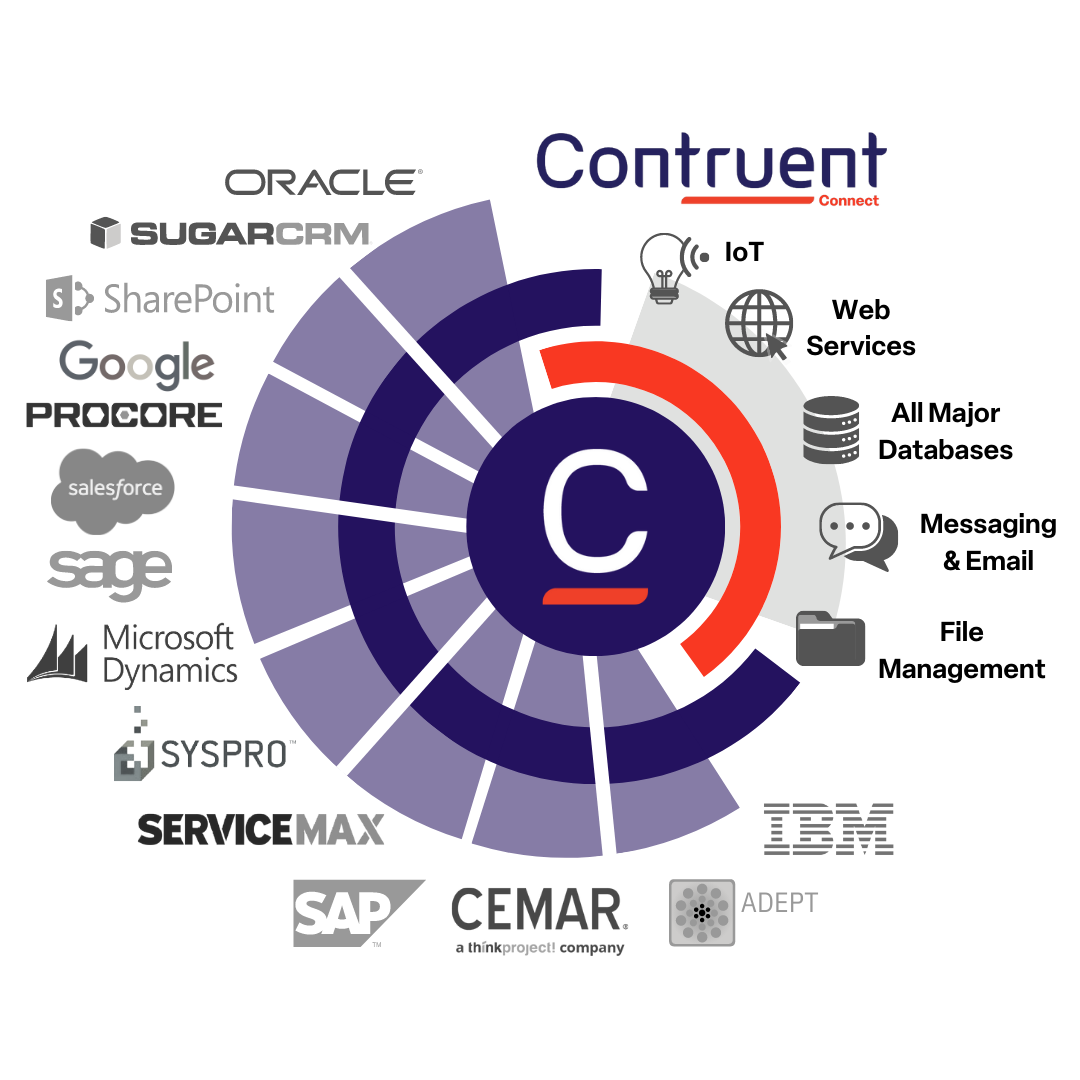Advanced ERP Integration
Seamless integration to digitally transform your organization
Connect IT systems, ERP systems, financial systems and other legacy systems to orchestrate data flow that supports your business goals. Contruent Enterprise bridges the gaps between your systems and applications in real-time, ending information and data silos.
Contruent Enterprise integrates with Oracle Primavera P6 and Microsoft Project out-of-the-box, but can integrate bi-directionally with these systems with the integration add-on. It seamlessly integrates with the entire range of SAP, the entire suite of Oracle, Microsoft Dynamics, Sharepoint, IBM, JD Edwards, Salesforce.com, IBM, email, websites, CRM systems, and much more!
Solution capabilities
Responsive, seamless, real-time integration
Bi-directional communication with countless systems
User-friendly and code-free data mapping
Benefits
- Digitally transform your organization and destroy data silos
- Automated and configurable, bi-directional communication and shared data between PRISM, SAP, Oracle, and various other systems within the environment
- Eliminate mistakes and duplication caused by manual tasks and reduce business risks
- Improve revenue performance and lower operational costs
- Code-free integration with more than 100 pre-built, certified adaptors to leading IT systems and virtually countless other applications and technologies

Integration across functional areas is supported through Contruent via a common WBS/CBS alignment, including a structured set of codes aligned to the CBS and integrated systems… [enabling the integration of] planning and scheduling, contract management, finance and risk management systems.
Complete visibility across systems, applications and project controls data
Systems and business process engineering is one of the key elements driving integration within project controls. Cost control systems are the central systems businesses rely on when managing costs within their programs. However, cost systems do not operate in isolation and often depend on other systems such as Enterprise Resource Planning systems(ERPs), scheduling systems, estimating systems, document management systems and traditional business systems. When they are all brought together, you have a more complete set of data and information for the business to better manage their programs.
Learn how to effectively integrate project controls data, define service oriented architecture and its interactions with applications and discover the benefits that can be realized by managing programs from a central point.
